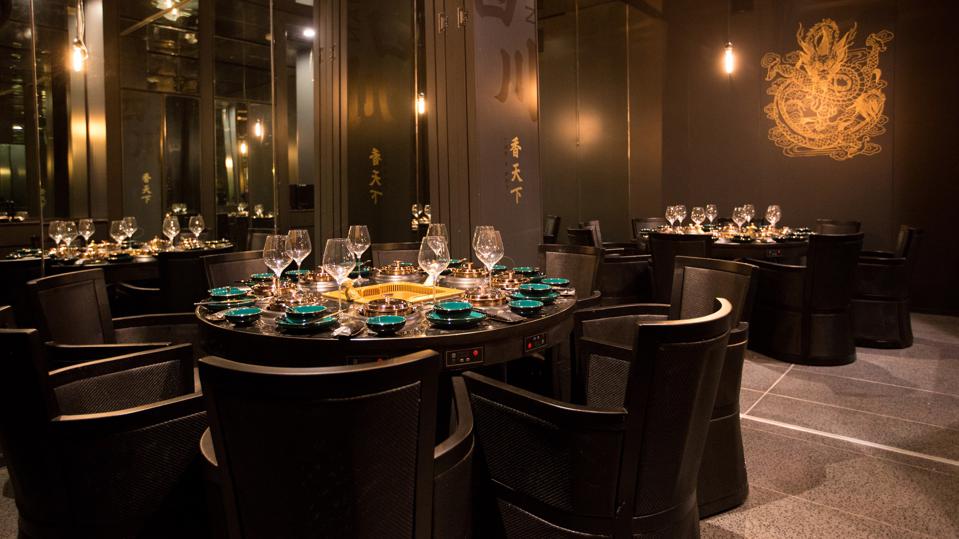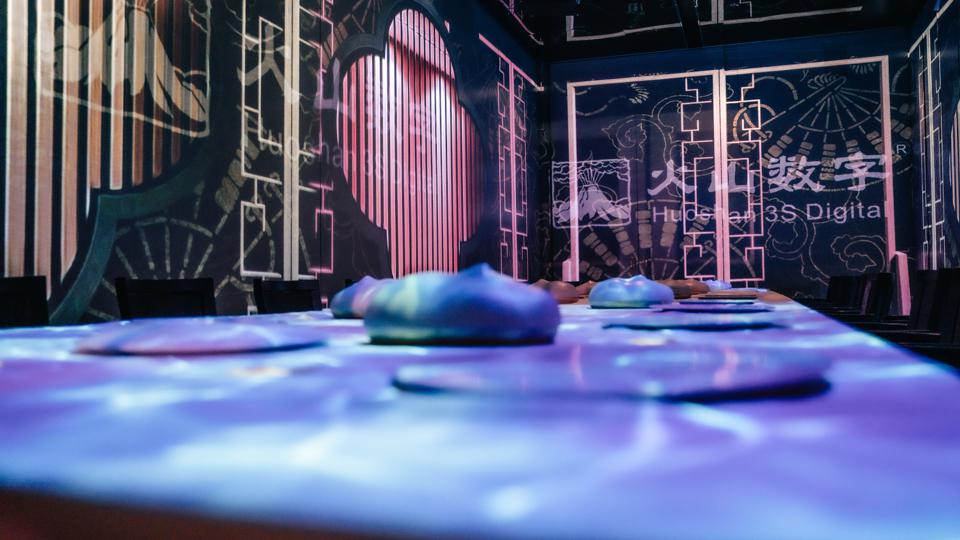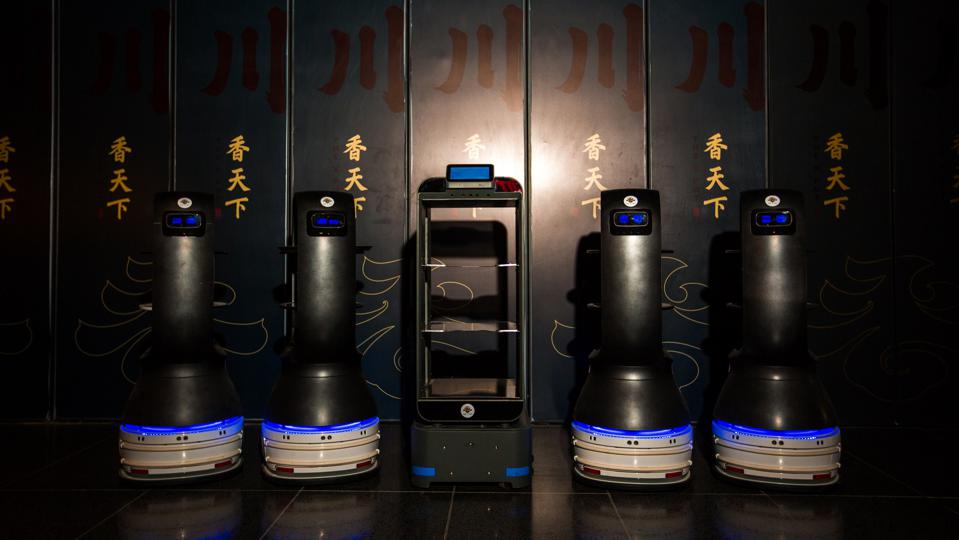Uncategorized
The X Pot Redefines Chinese Hot Pot With Robot Servers And 5D Projections
Las Vegas is home to a new kind of hot pot experience, complete with fine-dining-worthy ingredients, stunning 5D projections and robots. In recent years, this Chinese approach to dipping various ingredients, such as meat, seafood, noodles and vegetables, in flavorful broths has become more prominent in the U.S., thanks to heavy hitters like international chain Haidilao.
Zhao is the co-founder and CEO of NXT Group, a New York-based diversified holding company that owns and operates the X Pot. He got into the restaurant business after connecting with Haibin Yang when they were both 20 years old.
Zhao, who took time off from college to run his own ad agency, met Yang in 2016 through a client. Yang, who comes from a hospitality background, was looking to start a hot pot restaurant in Las Vegas. After hearing about the venture, Zhao decided to join him.
Together, the pair launched Chubby Cattle—the first-ever refrigerated conveyor belt hot pot concept—with the mission of changing “the way people think about Asian food, Mongolian food, Chinese food in general,” Zhao says.
From his perspective, mainstream American diners predominantly see Chinese food as a cheap takeout option. Zhao and Yang set out to shift these perceptions by offering fun and affordable dining with quality hot pot ingredients, such as A5 Wagyu beef and fresh seafood, and crafting an experience that’s inclusive and friendly to non-Chinese and non-Asian people who aren’t familiar with hot pot.

The partners have been successful in regards to this goal and the business as a whole. According to Zhao, over 50% of customers at Chubby Cattle are not Asian.

Chubby Cattle’s ability to bring in customers, even though it’s small relative to Las Vegas standards, caught the eye of the Venetian Hotel. “They really wanted to see what we could do with a bigger platform [and] a larger budget,” Zhao says.
The hotel offered an 11,000-square-foot area and $2 million worth of “free rent and cash as a grant to really forward the Asian dining space,” Zhao says. He and Yang took advantage of the opportunity to do something big by offering luxury hot pot in a fine-dining setting.
Zhao sees this elevated experience at the X Pot as an extension of their original mission. He says the restaurant is “a megaphone of our message to bring more cultures together and for people to try new experiences and no longer think ‘Hey, Chinese food is just takeout food and it’s cheap.’”
What does hot pot for a fine-dining crowd look like? When the X Pot opens its doors, guests will enter into a waiting area with 5D projections of Asian art and a tea ceremony.
Along with the animated projections displayed all throughout the restaurant, there will be thematic soundscapes and interactive light shows flashed directly onto patrons’ plates. For customers who book the VIP room, the restaurant will have an animation uniquely paired with each course of the 12-course meal.
Another notable feature at the X Pot is robot servers that have been specifically designed for the concept and customized according to its floor plans.
This form of automated assistance is not completely new to the world of hot pot. Haidilao uses robots to bus out ingredients at restaurants in China and its New York location. But the technology has yet to become commonplace at hot pot spots and in the restaurant industry at large.

Zhao says the X Pot is the first of its kind (at least in Las Vegas) to offer “that automation aspect of the robotic servers to really assist our customers” and an “interactive dining experience where you’re almost enjoying a show as an art piece while you’re eating.”
While the VIP room comes with a prepaid set-course meal, customers in the main dining room can order their own dishes. Human waitstaff will be present to assist diners and explain the menu, but robots will do the heavy lifting. These automated helpers will carry fresh ingredients, soup bases, other menu items, equipment and utensils to the tables and take back used dishes to the kitchen.
Zhao asserts that the intention behind using robots is not to replace human labor but rather to enhance the customer experience. “It’s almost like a dental assistant, but an assistant for the server,” he says. By eliminating the need for waitstaff to go back and forth from the kitchen, they will be free to stay in the dining area and focus on providing great service within a radius of four to six tables.
The X Pot will also offer ingredients you might not be used to seeing at a regular hot pot place, such as a creamy lobster soup base, Wagyu ribeye that’s been dry-aged for 28 days and geoduck. In addition to these premium offerings, the menu will include classic ingredients more common to the hot pot experience such as fish tofu, sliced beef tendon and baby bok choy.
According to Zhao, the average check per person in the main dining room will be about $60 and go up depending on the ingredients selected. The VIP meal can go up to $350 per person.
This might seem like a steep price tag for hot pot, which is usually enjoyed in a casual setting, but Zhao says when you consider the fine-dining aspect of the restaurant, the cost is actually more affordable in comparison to the prices at other concepts of its level. He also plans on making the restaurant more accessible to a wider customer base by offering discounts for locals.
Creating a new kind of hot pot experience worthy of making a splash in the Las Vegas dining scene hasn’t been quick and easy for NXT Group. The X Pot has been in development over the past two years and has required a significant investment.
“We put in $10 million into this project to really create a landmark for what Asian cuisine can be in Vegas and to change the way people think about hot pot and Asian food,” Zhao says. Before the coronavirus outbreaks, the X Pot was projected to bring in $10 to $15 million in revenue.
That estimate may have to be adjusted once restaurants open back up for indoor dining and dining habits are reassessed, but Zhao feels sure that the X Pot will have a place in a post-pandemic world. After seeing the progress in other countries, he is confident that the restaurant industry will eventually rebound. It’s just a matter of sustaining businesses until then, he says.













